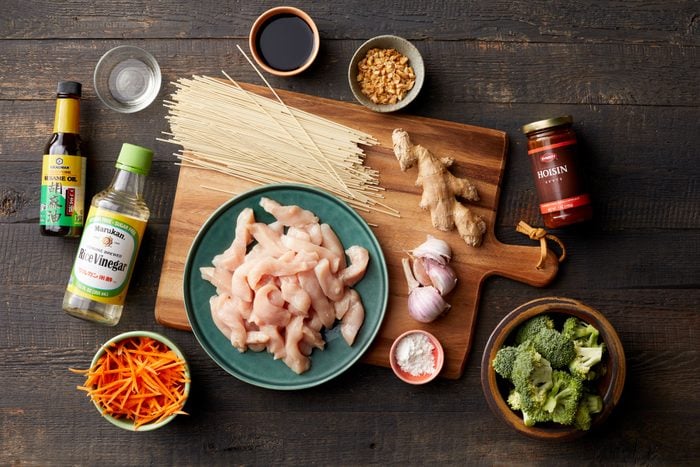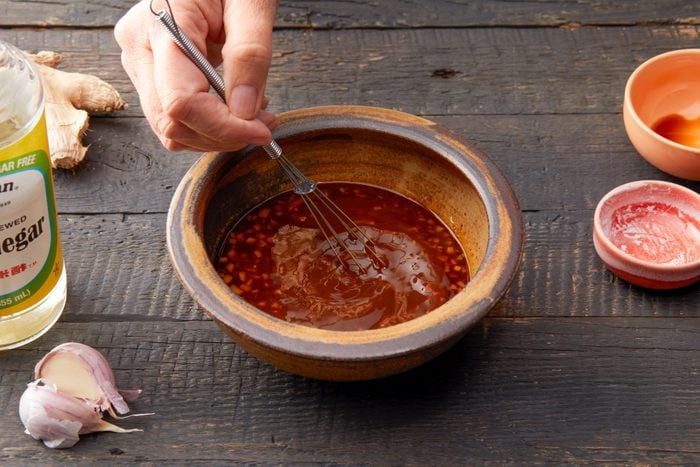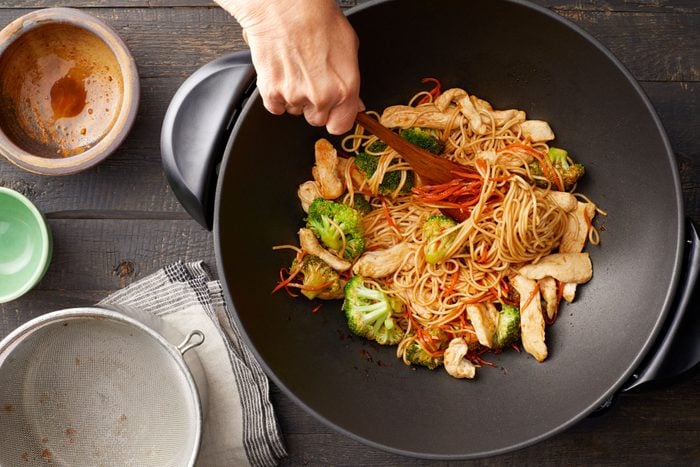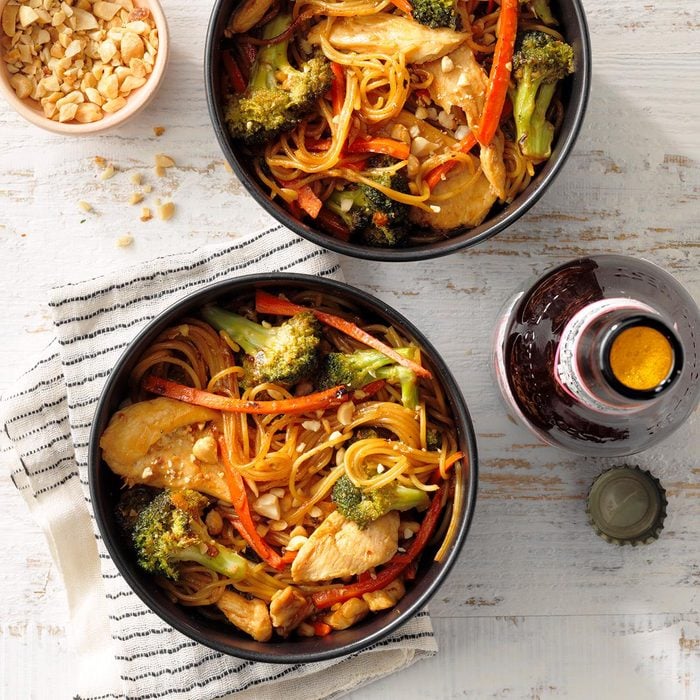Next time you’re craving a comforting dish of Chinese takeout, make this chicken lo mein recipe. It contains noodles, chicken, stir-fried vegetables and an irresistible umami sauce. The term “lo mein” comes from the Cantonese lou min, which translates to “stirred noodles,” which is just right for this stir-fried dish. And if you’re wondering what the difference is between chow mein and low mein, we’ve got you covered. Low mein is significantly more saucy and rich in flavor, while chow mein is lighter and crunchy.
Here’s how to make this popular takeout dish at home.
Key Ingredients for Chicken Lo Mein

The key ingredients for chicken lo mein are pretty simple.
- Lo mein noodles: Lo mein noodles work the best with this dish because these noodles are smooth, slippery and hold onto the sauce well. Angel hair pasta or Chinese egg noodles would work, if you can’t find lo mein noodles.
- Soy sauce: Soy sauce is the secret superstar of this dish. Soy sauce is great because it provides a salty and umami flavor to any dish. The soy sauce coats each noodle, bringing you that Chinese takeout flavor you want.
- Boneless skinless chicken breasts: Chicken breasts add lean protein to this dish that will keep you feeling satisfied for longer. If you want dark meat, you can use chicken thighs instead.
- Vegetables: You can’t make great lo mein without fresh broccoli florets and carrots. Feel free to add more vegetables if you’re a veggie lover. Sliced onions, red peppers or even jalapeno peppers would be a beautiful addition to your dish.
So, at the end of the day, it’s all about preference. If you don’t own a traditional Chinese wok, a good ol’ skillet will work perfectly well for making lo mein. Or, invest in our Test Kitchen’s pick for the best wok to buy.
Directions
Step 1: Make the noodles and sauce

Cook the noodles according to package directions. Then, in a small bowl, combine the cornstarch, soy sauce, vinegar, hoisin sauce, ginger and garlic. Set aside.
Step 2: Cook the chicken
In a large skillet or wok, stir-fry the chicken strips in 1 tablespoon of canola oil for 5-8 minutes or until fully cooked. Carefully remove the chicken strips with a slotted spoon and set aside.
Step 3: Stir-fry the veggies
Stir-fry the broccoli and carrots in the remaining canola oil for 5-6 minutes or until crispy and tender. Add the cornstarch mixture from Step 1 to the pan. Bring the veggies and cornstarch mix to a boil. Then, cook and stir for 2 minutes or until thickened.
Step 4: Stir in the noodles

It’s time to make the recipe live up to its name and stir in the noodles. Then add the chicken and heat through. Serve with a sprinkle of crushed peanuts. Enjoy!
Chicken Lo Mein Variations
- You can certainly use different noodles than the traditional lo mein. Feel free to use angel hair pasta, rice noodles or even ramen noodles.
- For an added kick, sprinkle some crushed red pepper or a squeeze of Sriracha on your meal.
- If you’re not in the mood for chicken, try a pork lo mein, beef lo mein, crab lo mein or vegetable lo mein instead.
Wok vs. Skillet
It’s important to know about the tools you’ll be using. In many cases, skillets and woks are interchangeable, but there are some subtle differences you should know about:
- Skillets have a flat bottom and a shallow height and come in a variety of sizes to accommodate varying amounts of ingredients. This everyday cooking tool works well on both electric and gas stovetops. Read our handy guide to find the best nonstick frying pan for your home.
- Woks allow foods to cook much faster, since oil heats more quickly. Originally from China, woks have a round bottom and are slightly taller than skillets. They work best on gas stovetops due to their shape. They’re used for many Chinese culinary techniques because they’re great for steaming, deep frying, poaching, searing and, of course, stir-frying.
How to Store Chicken Lo Mein
Store your delicious chicken lo mein leftovers in an airtight container for up to four days in the fridge. You can reheat leftovers in a microwave, or use a wok or skillet. It will only take four to five minutes to be perfectly warmed up and ready to serve.





















